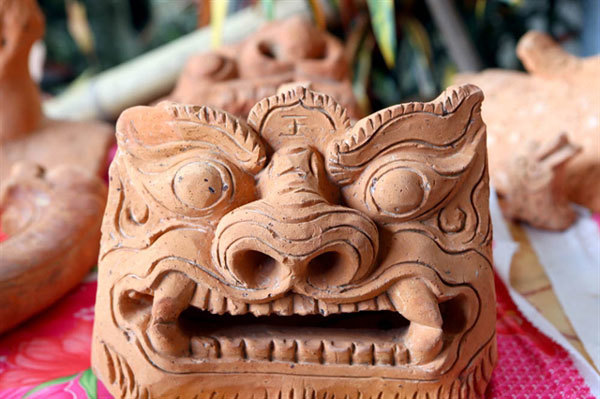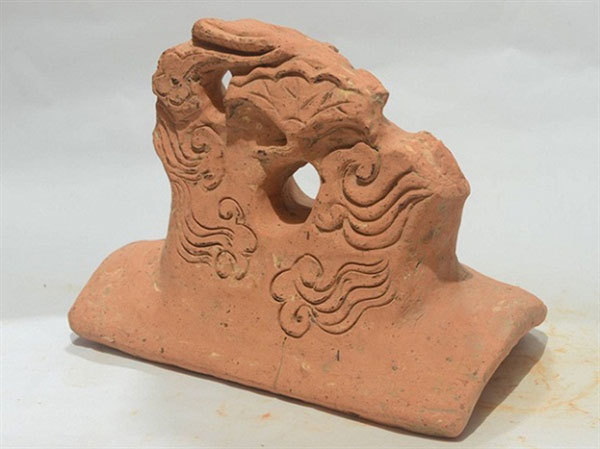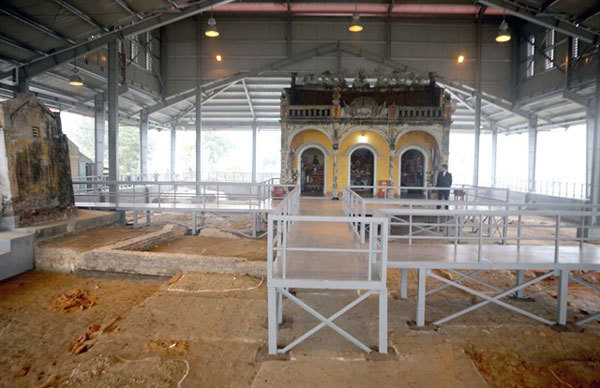Experts from domestic institutes and seven foreign scientists from Japan, South Korea and China gathered on November 30 to review recent excavations and propose preservation plans for the site.
Photos: Unique vestiges at Tran Dynasty’s palace
Amazing rural Vietnam
Thai Binh: Dong Bang temple festival named national heritage
 |
| Ceramic objects from the Tran Dynasty found at the site. — Photo daidoanket.vn |
Lo Giang Palace is a system of royal buildings outside Thang Long Citadel that were used to provide accommodation for the king.
Many palaces were built under the Tran reign but not many still exist.
According to researchers, rare materials had been found at Lo Giang Palace that were unlike finds at other Tran palaces including Thien Truong (Nam Dinh Province) and Vu Lam (Ninh Binh Province).
Scientists from the Institute of Imperial Citadel Studies conducted excavations in 2014, 2015 and 2017 at Hong Minh Commune in Hung Ha District and discovered various building materials and daily utensils, and the foundations of stone pillars at Thai Temple.
 |
| Decorative pattern of a dragon and cloud found at the site. — Photo giaoduc.net |
“This is an important discovery as this is the first time we have found wooden architecture from the Tran Dynasty built on rectangular pillar foundations,” said Prof Bui Minh Trí, rector of the institute. “The remains of the pillars here are very big. It means the pillars must have been huge to hold up a very large building with many floors.”
Tri said the same form of pillars had been found at Thang Long Citadel which were built under the Ly Dynasty (1009-1225), but they were much smaller.
Tri said the palace at today’s Tran Temple (Thai Lang) might have used by kings Tran Nhan Tong (1278-1293) and Trần Anh Tong (1293-1314), and was also home to Kien Xuong Palace built under King Tran Hien Tong’s (1329-1341) reign, according to records.
Experts confirmed that Lo Giang Palace covered a total area of 554sq.m.
They found various decoration details with dragon figures; pieces of tiles featuring the face of a lion and carving of a Chinese character with the word “King”.
The building must have been an important place, Tri said.
“Lo Giang Palace seems to have been a big and important palace during the Tran Dynasty in the ancient Long Hung Region,” Tri said. “It shows that the area was not only the place where Tran kings started their reigns because it was also used for important national events.”
 |
| The excavation site is now protected by a roof. — Photo daidoanket.vn |
Nguyen Thi Linh, deputy chairperson of Thai Binh Province’s People’s Committee, said the authorities had assigned Hung Ha District to co-ordinate with the institute to construct a roof to protect Thai Temple and other remnants unearthed at Lang Sa.
Authorities will compile a dossier to ask the culture ministry for a national level historic relic title for the site and call for investment to preserve the palace.
Lo Giang Palace and Kien Xuong Palace are both mentioned in Đại Việt Sử Ký Toàn Thư (The Complete Annals of Dai Viet): “In 1293, the king’s mother passed away
in Lo Giang Palace, Long Hung, her body was kept temporarily in Long Hung Palace; …in 1341, King Tran Hien Tong passed away, his body was kept temporarily at Kien Xuong Palace."
Linh said thanks to the discoveries, the province planned to develop the value of the palace and connect overall culture heritage in neighbouring areas for the purpose of socio-economic development of Hung Ha District and Thai Binh Province. — VNS
 A recent international workshop held in the northern province of Thai Binh once again confirmed the value of Lo Giang Palace built during the Tran Dynasty (1225-1400).
A recent international workshop held in the northern province of Thai Binh once again confirmed the value of Lo Giang Palace built during the Tran Dynasty (1225-1400).